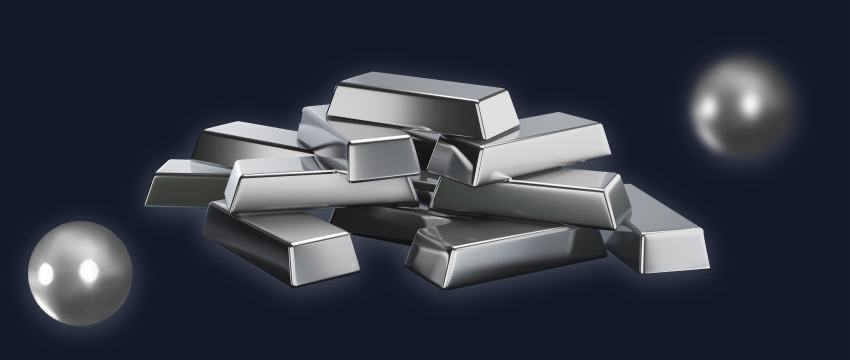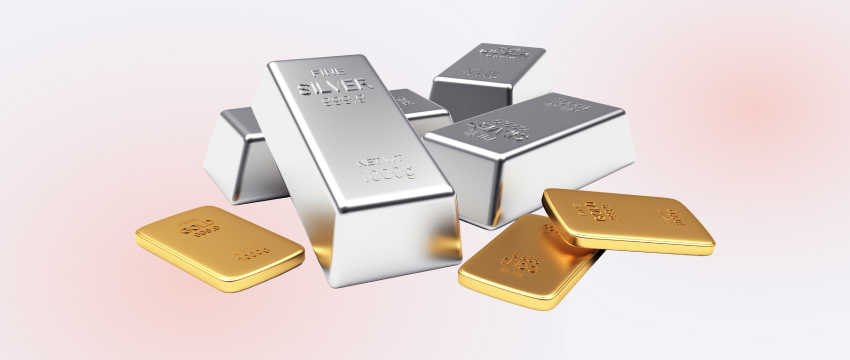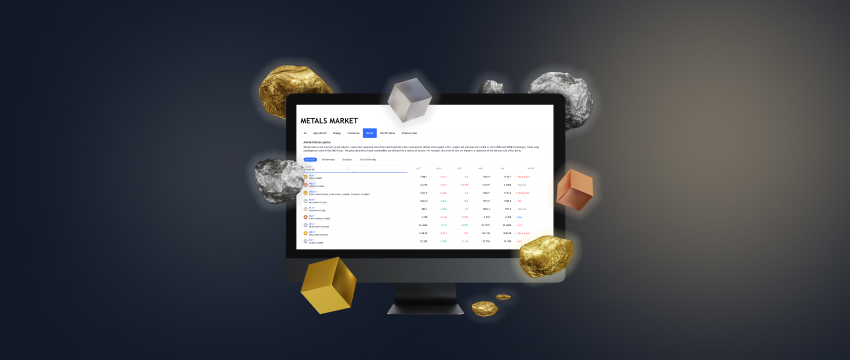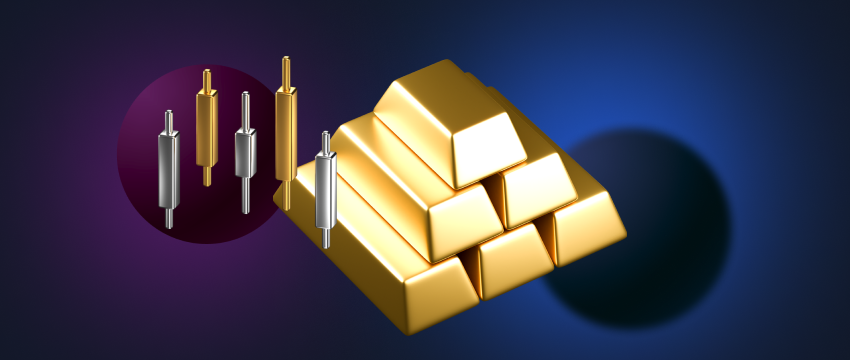Precious metals are a popular way to diversify a trader’s portfolio. They also act as a hedge against currency inflation or economic instability. Examples of the three most popular traded precious metals are gold, silver, and platinum.
Due to their rarity, precious metals are regarded as very valuable commodities, but they do come with risks. This is because precious metals are considered volatile investments. Price fluctuations are often the result of financial or market uncertainties, geopolitical events, scarcity, and demand for a particular metal.
In this article, we’ll take a closer look at the different precious metals, what precious metals trading looks like, and the additional risks a trader should be mindful of.

A little history of precious metals
These popular commodities have played a significant role in economies across the globe. This was either for their use in the production of currencies (money minting) or for backing currencies (e.g., the gold standard). In more recent times, precious metals are typically purchased as a form of a financial asset.
Let’s talk about gold
Gold is one of the most popular traded precious metals worldwide. It is a sought-after commodity, not only for its use as jewellery but more importantly, as a form of currency.
Gold prices are usually set daily and are adjusted in real-time. Pricing is typically implemented in 2 ways, namely as gold futures which is a standardised contract through which a trader buys or sells an amount of gold on a date in the future; or spot gold whereby the transaction for trading gold happens immediately, not on a future date.
Factors impacting the price of gold
- Gold prices may go down if interest rates rise. This is because traders may sell the gold to raise funds for other forms of trade.
- Supply and demand, i.e., if the demand for gold (e.g., in electronic goods, jewellery, gold coins, bullion, etc) increases, so do gold prices.
- Being that gold is denominated in US dollars when the value of the dollar strengthens, gold prices tend to fall.
- The cost of gold mine production also plays a role in the price of this commodity. The more expensive gold mining becomes, the higher the likelihood of gold prices increasing too.
How is gold traded?
Gold can be traded in different ways. It can be purchased in the form of gold bullion, jewellery, etc. Gold can also be traded through ETFs (exchange-traded funds) that hold precious metals, or by buying options on gold futures or options on a gold ETF.

More on trading silver
Silver is considered a very volatile commodity to trade, more so even than gold. As a result, this precious metal is subject to frequent price fluctuations. There are several ways in which silver can be traded. Trader will usually pick their preferred trading method based on their trading experience, available capital, and whether the trade is conducive to meeting their trading goals.
Trading methods include CFDs which are contracts for differences entered into between two parties, in this case, a trader and a broker. Through the CFD, a trader will speculate on whether the silver price will go up or fall, without having to own the commodity. The objective is for the trader to make a gain from the price difference between when the trade is opened to when it is closed.
Why opt for CFD silver trading?
Well, CFDs offer leverage so less capital is required in order to trade. Further, CFDs offer a way to speculate on the price of this precious metal without having to take ownership of it.
Other ways to trade silver
Silver futures contracts are also popular as they offer traders high leverage. As a result, a trader needs less capital to open a big trade position. However, while traders can make large profits if the market turns in their favour, they can just as quickly incur large losses if the market moves in an unfavourable direction.
Like gold, silver can also be purchased as coins or bullion. For those purchasing silver in its physical form, taking the steps to protect it from theft is critical. Being mindful of costs like shipping, storage, insurance, and transaction fees, should also be considered.
For traders not wanting to buy the physical asset, another way of trading silver is through exchange-traded funds (ETFs). ETFs include iShares Silver Trust (SLV) and the Aberdeen Standard Physical Silver Shares ETF (SIVR).

Why trade platinum?
Platinum is a unique commodity in that it is regarded not only as a precious metal but also as an industrial metal. It is a very rare metal too, more so than gold and silver, which often sees it fetching a higher price per ounce than gold. It is however regarded as a highly volatile precious metal, with prices and supply and demand largely influenced by the political climate of the countries in which it is mined.
Platinum is used as a raw material in the manufacture of products across sectors worldwide. This includes the automotive industry, jewellery manufacture, as well as the petroleum and computer industries.
Mining of platinum
South Africa mines approximately 90% of platinum globally. Other countries in which platinum is mined include Zimbabwe, Russia, Canada, and the United States.
Why trade precious metals?
- Hedge against inflation
- Intrinsic value
- The ability to invest in a physical asset
As discussed, however, precious metals are highly volatile, with prices influenced by multiple variables mentioned herein. So, while the potential for making a large profit is high, so too is the possibility of incurring large losses.
How to navigate the risks that come with precious metals trading
If you’re just getting started with precious metals trading, learn everything you can about these popular commodities. Make use of educational resources to acquire as much information as you can to build your knowledge.
Establish your goals, that is what you’re trying to achieve by diving into trading precious metals. Determine your trading style (relative to the amount of capital you have to trade with and your tolerance for risk). Then design a trading strategy that will assist you in achieving your goals. As you embark on your trading journey, be mindful that any trade involves risk. It is possible to incur big losses of capital so budget accordingly and always considers whether you can afford to take on the risk of losing your money.
Disclaimer: This material is for general informational & educational purposes only and should not be considered investment advice or an investment recommendation. T4Trade is not responsible for any data provided by third parties referenced or hyperlinked, in this communication.



